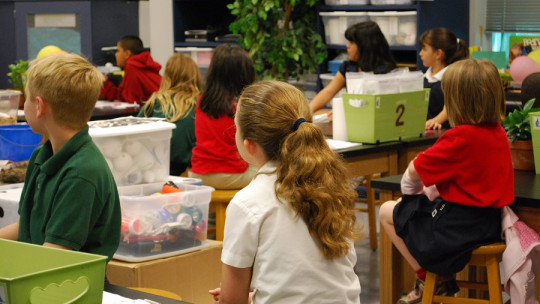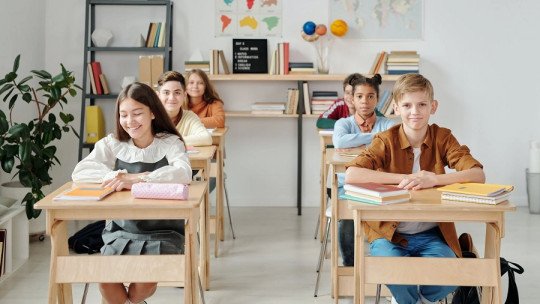
We all know what it means to learn, but sometimes we find it difficult how to teach how to learn or how to learn how to learn. To this end, in recent years, neuroscience has made people aware of the cognitive processes that are launched in the acquisition of knowledge
In this article we will see what brain-focused research tells us about how we learn to learn.
How does the human brain learn?
Neuroscience tells us that the brain does not learn by repeating, but the information is consolidated by “doing”, moving, creating, getting excited. The cortex is a motor organ, and the child requires play and movement to discover, explore and, therefore, learn. Likewise, we consolidate information better when we interact with others and there is an emotional involvement. As Jan Amos Comenius said; “Everything that makes you happy when learning reinforces your memory.”
Education should be aimed at enhancing the best in each individual, at helping us to be more creative, at putting passion and soul into what we do. develop socially and emotionally And to do this, it is important that both teachers and families take the following points into account.
1. Knowledge of the brain
Know and understand the functioning of the different cortical structures that work in the learning process will help us parents and teachers to accompany our children and students in their studies in the best possible way.
Teaching them to rest during their study every 15-20 minutes to do Brain Gym exercises or an activity of a certain physical intensity for 5 minutes will help them reactivate their executive attention system. Furthermore, the latest research on the brain reflects that including dynamics such as Mindfulness or yoga in the classroom enhance many factors associated with the so-called executive functions. The latter are responsible for fundamental cognitive systems for school, such as attention, self-control, working memory or cognitive flexibility, among others.
2. Cooperation
It is essential to have a vision of teamwork between school and family. Enabling contacts between teachers and parents through meetings or coffees can promote more fluid communication and promote a deeper knowledge of the students. Another interesting aspect could be to rely on family members as facilitators or collaborators within the classroom dynamics, which could become a great resource for teachers.
Within the classroom, this cooperation can also be possible between students, through supporting others. Create “travel companions”, where two boys are references for each other, for topics such as writing down notes in the agenda or taking the material home.
3. Motivation
Creating the spark of curiosity in them is important so that they can get going and maintain interest. Make them understand why they study what they study, what implications it has on your daily life, and to do so use contextualized learning, with practices in the laboratory, outdoors or with centers of interest that awaken your desire to learn. Supporting learning with audiovisual material, documentaries, excursions and games will encourage their enthusiasm and desire to learn.
4. Connection
Connect and empathize with our child or student It is the basis for them to feel safe on the path of their training. Being able to see them, feel them, understand them, will make it easier to accompany them in the academic field. If we have a child who is having difficulties, and we make him see that we understand how he feels, we calm him down and collect his discomfort, it will help him feel meaningful and it will be easier for him to begin to trust himself, with our help.
An example
Let’s apply all these tips to a practical case.
Ander is a 10-year-old boy diagnosed with ADHD. He comes to our Vitaliza office since the family reports that at school he has a lot of problems staying calm, even bothering classmates. He never writes down the tasks in the agenda and forgets half of the material All of this is generating constant reproaches at home and at school, having a negative impact on the motivation to go to school and on their state of mind.
Boys like Ander are, on many occasions, misunderstood children, classified as lazy, absent-minded or disruptive. It is important to understand that these children regulate themselves through movement and that they need it to calm down. Sometimes they make real efforts to stay still and quiet, but when they can’t, they feel great frustration
Allowing them a movement adapted to the classroom, such as sending them to the secretary for some material, making them responsible for distributing the books or letting them organize the reading space during the teaching session, can be a good solution for these children to carry out the movement they they need. Cooperating between the family and the school to follow the same guidelines in both environments and that within the classroom, Ander has a travel companion where they both review the agenda at the end of the day, will help him to structure and organize himself better.
Generate dynamics in the classroom that require the participation of Ander and his colleagues, working through projects chosen by them. Combining these sessions with videos, experiments and games will help increase the attention spans of these children. If, in addition, this child receives the understanding of the teacher and his family, that when he makes a mistake he puts himself in his place, connects with the emotional state he is experiencing and helps him redirect his energies, he will give rise to Ander and many others like him. he, may have a promising future.
Author: Anabel de la Cruz Psychologist-Neuropsychologist, specialized in perinatal psychology at Vitaliza.








